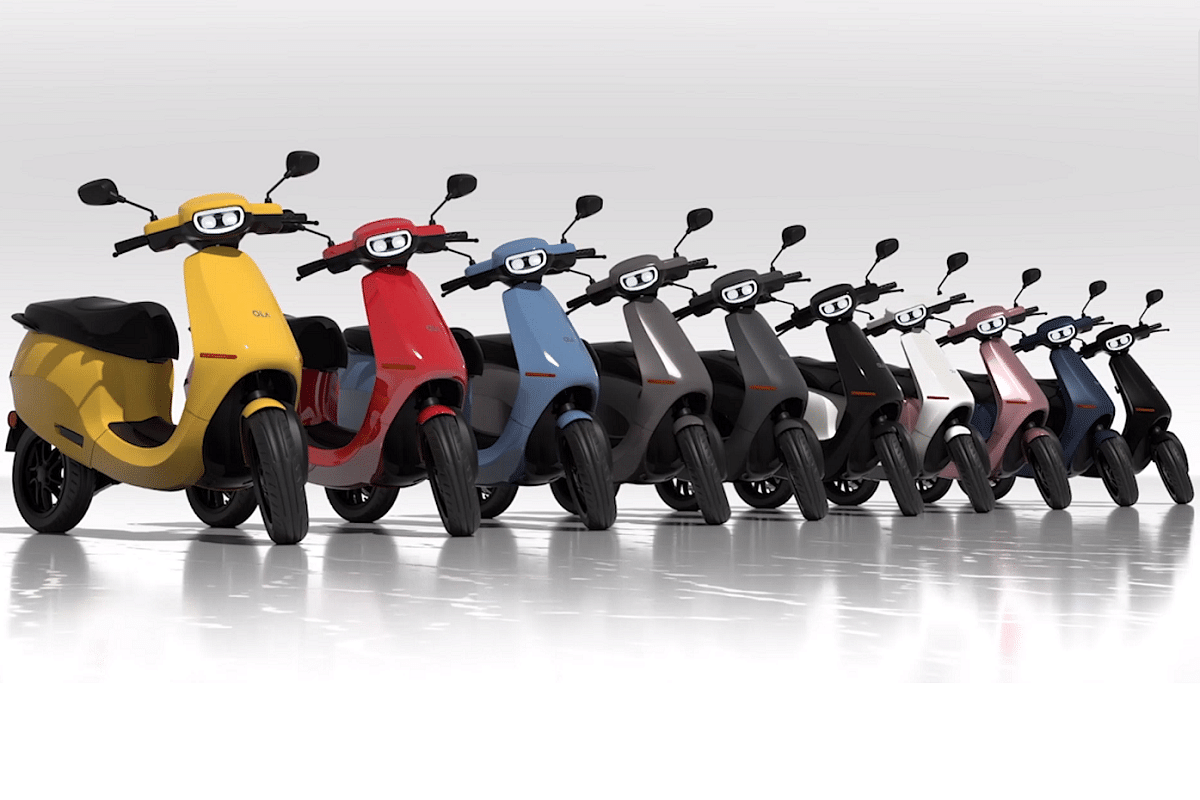News Brief
Ola Records EV Sales Worth Rs 1,100 Crores Before Closing Purchase Window
- S1 and S1 Pro were launched at prices Rs 99,999 and Rs 129,999, respectively.

Ola electric scooter
Ride-hailing firm Ola said on 17 September that it sold e-scooters—Ola S1 and S1 Pro—worth over Rs 1,100 crore within two days.
CEO Bhavish Aggarwal, who is also Ola’s co-chairman, announced that the sales of Ola electric scooters crossed Rs 600 crore on the first day. His Twitter post reads: “India is committing to EVs and rejecting petrol! We sold 4 scooters/sec at peak & sold scooters worth 600Cr+ in a day! Today is the last day, the purchase will shut at midnight. So lock in this introductory price and buy on the Ola app before we sell out!”
The numbers on the second day were even better. On 17 September, he tweeted: “Day 2 of EV era was even better than Day 1! Crossed ₹1100Cr in sales in 2 days!”
Aggarwal also noted that "the last 2 days have been exhilarating and humbling at the same time. All of us at Ola are thankful to all of you who’ve bought our products. You are the true new-age revolutionaries who are taking India to an electric future!"
Before opening the online purchase window, the company said that during the purchase process, buyers could add insurance to their Ola scooter. They could choose plans from a variety of insurance partners through Ola Financial Services' insurance products. Ola's e-scooter is available in ten colours and features an 8.5 KW motor and 3.97 kWh battery pack created in-house.
Ola Electric said on 7 September that the equated monthly instalments (EMIs) for S1 scooters would begin at Rs 2,999 per month, while the EMIs for the Ola S1 Pro, which is the sophisticated version of the electric scooter, would start at Rs 3,199.
S1 and S1 Pro were launched at prices Rs 99,999 and Rs 129,999, respectively (ex-showroom including FAME II subsidy and excluding state subsidies).
Earlier on 6 September, Ola Electric announced that it has partnered with several top banks and financial institutions, including HDFC Bank, ICICI Bank, Kotak Mahindra Prime and TATA Capital, to provide loans to clients for its S1 electric scooter.
The electric vehicle market of India has been witnessing gradual growth. Between 2017 and 2018, 69,012 electric vehicles hit the roads in India. In 2018-19, the number climbed to 143,358 units, then to 167,041 units in 2019-20.
Ola Electric's latest advances come at a time when EV adoption is gaining steam in India, with more vehicles sold in the first seven months in 2021 than in the entire year 2020. According to data, EV manufacturers sold 121,170 units across all categories between January and July, compared to 119,647 EVs sold in the entire previous calendar year.
As per JMK Research, registered EV sales in July 2021 increased by 134.8 per cent month-over-month to 26,127 units, marking the highest registrations in a month so far for 2021. This rise followed the FAME-II notification last month, which enhanced EV incentives and lowered their prices even further.
Ola's bookings are still available on olaelectric.com, even though the purchase deadline has expired. In a statement, Aggarwal said: “I want to let all of you know that we will be reopening the purchase window on November 1, 2021, just in time for Diwali. So, if you’d like to buy the Ola S1 and the S1 Pro, then I encourage you to reserve asap.”
Additionally, he said: “Those who have already reserved but did not purchase in the window that ended yesterday will also be able to purchase on November 1.”
According to independent research by CEEW Centre for Energy Finance (CEEW-CEF), India's electric vehicle market may be worth about $206 billion in the following decade if the country achieves its 2030 EV goals. It also claimed that the country's EV ambition will necessitate a total investment of more than $180 billion in vehicle production and charging infrastructure through 2030.
Support Swarajya's 50 Ground Reports Project & Sponsor A Story
Every general election Swarajya does a 50 ground reports project.
Aimed only at serious readers and those who appreciate the nuances of political undercurrents, the project provides a sense of India's electoral landscape. As you know, these reports are produced after considerable investment of travel, time and effort on the ground.
This time too we've kicked off the project in style and have covered over 30 constituencies already. If you're someone who appreciates such work and have enjoyed our coverage please consider sponsoring a ground report for just Rs 2999 to Rs 19,999 - it goes a long way in helping us produce more quality reportage.
You can also back this project by becoming a subscriber for as little as Rs 999 - so do click on this links and choose a plan that suits you and back us.
Click below to contribute.
Latest